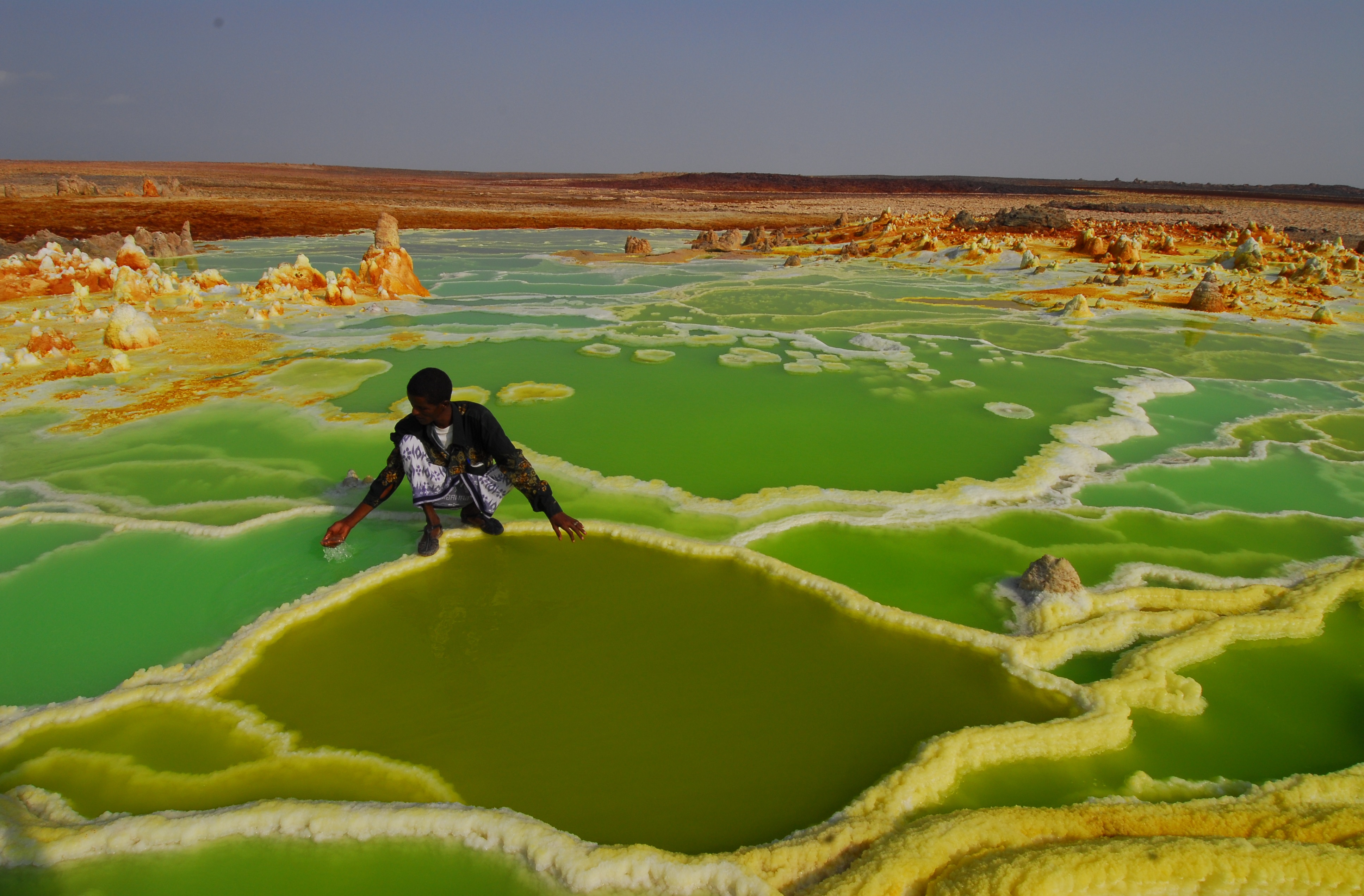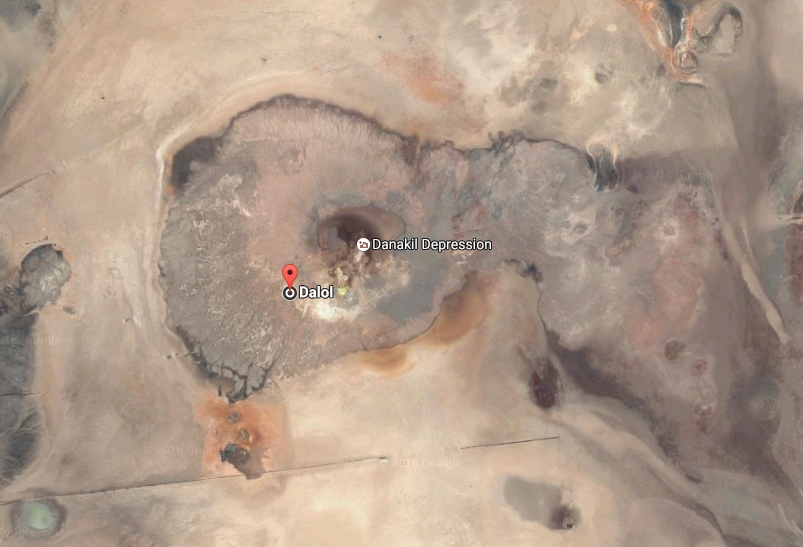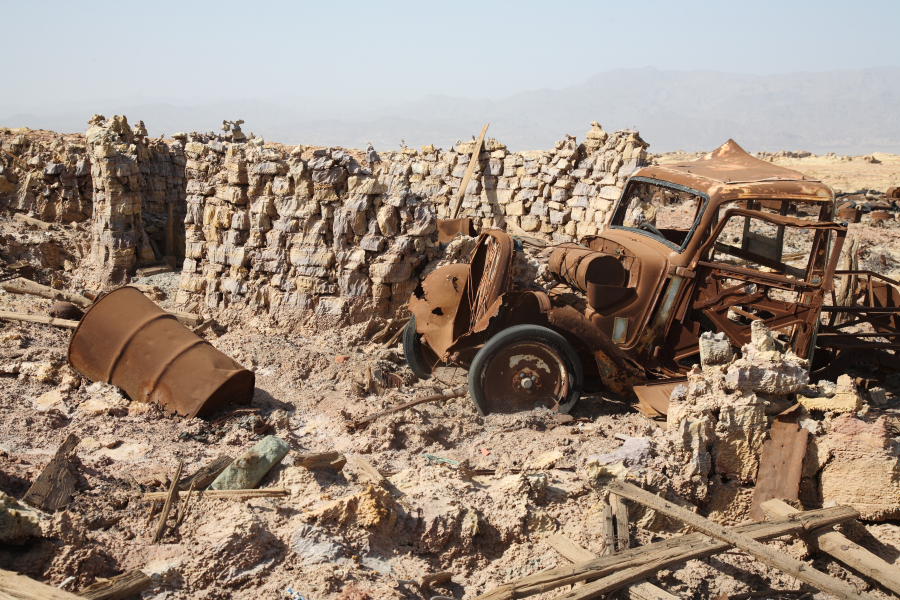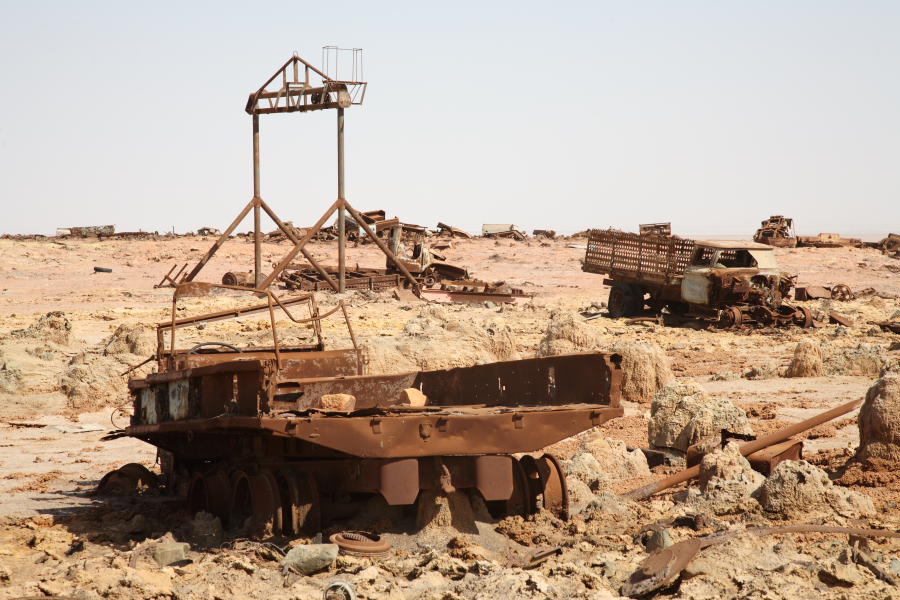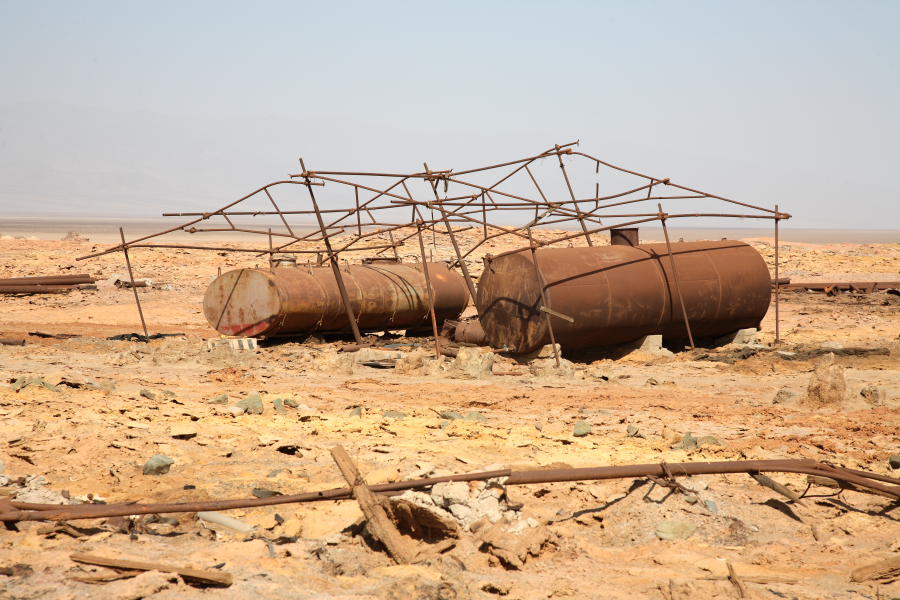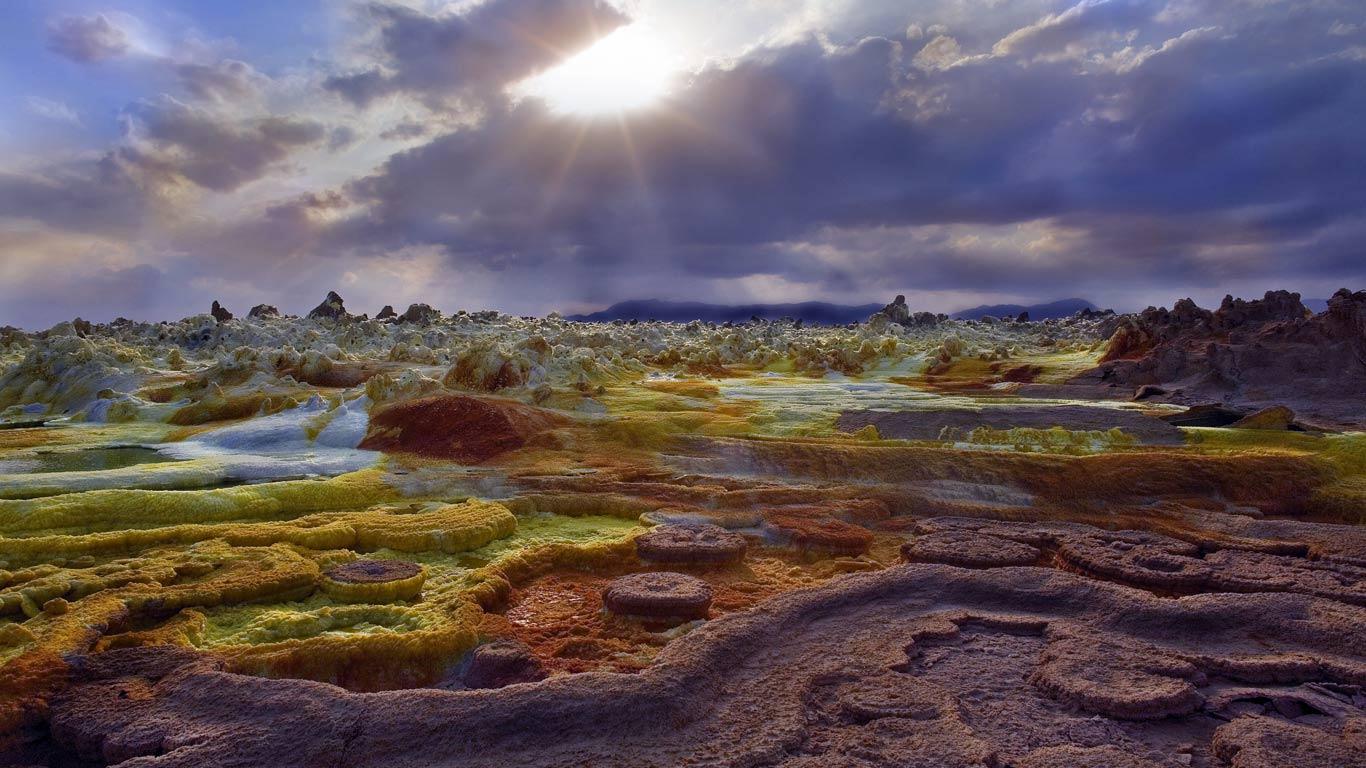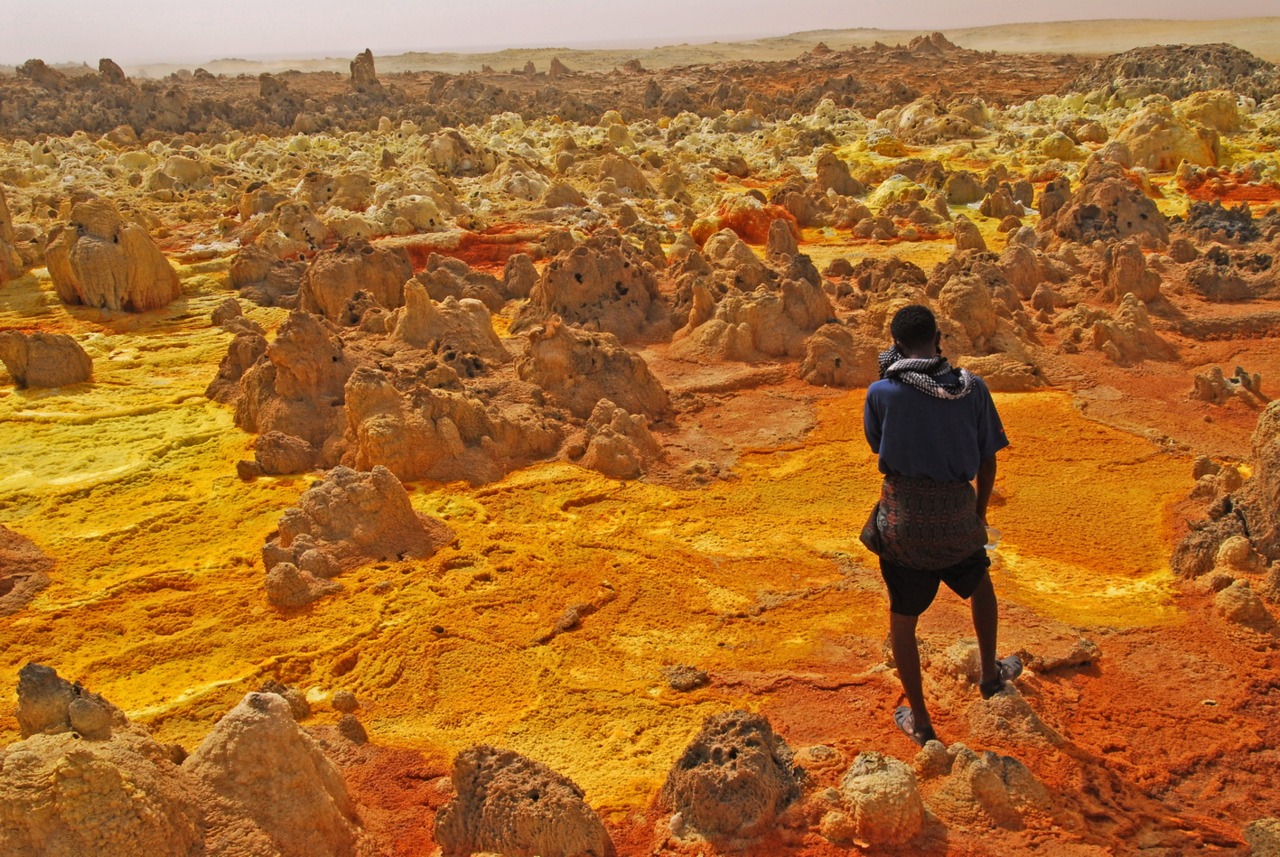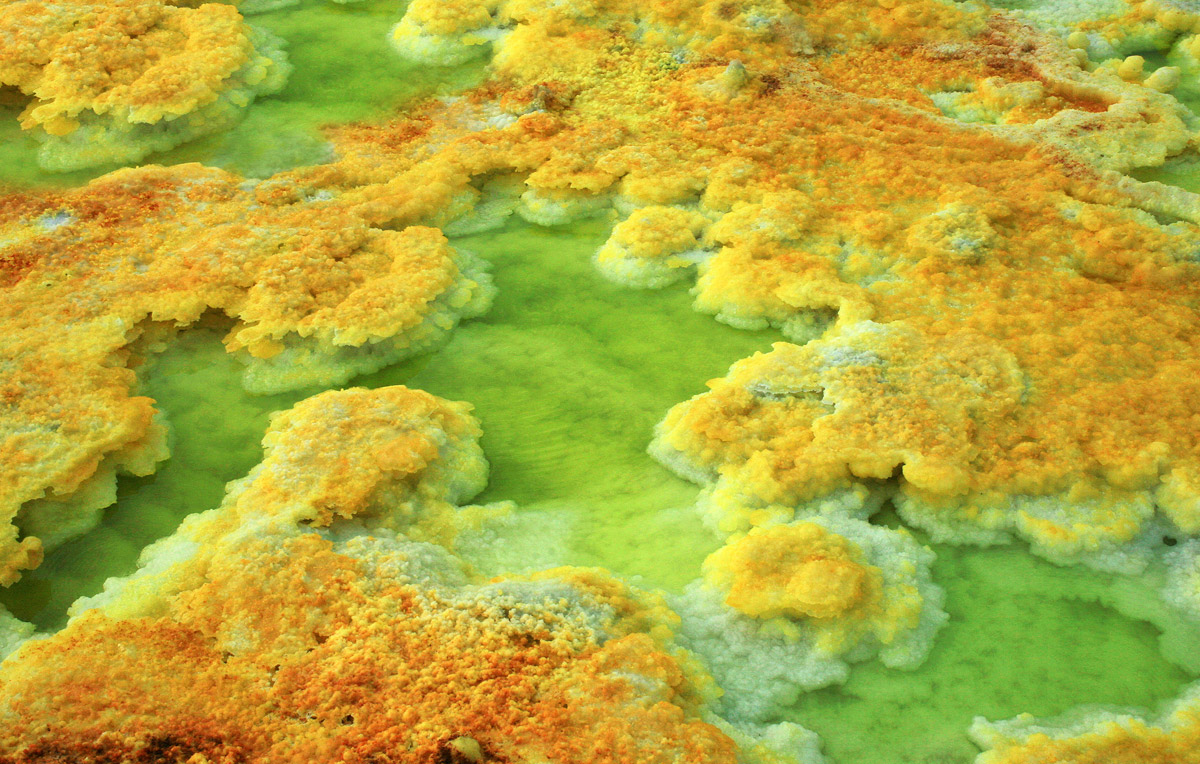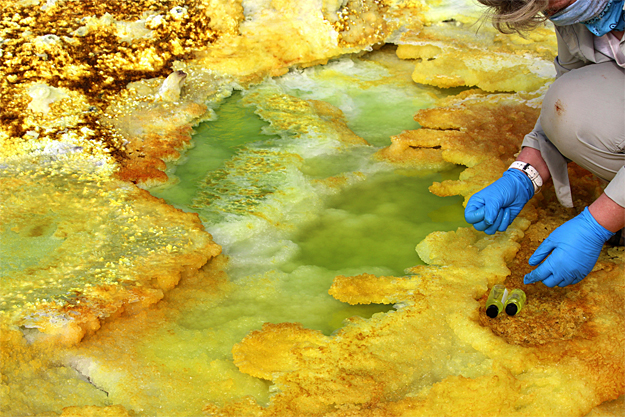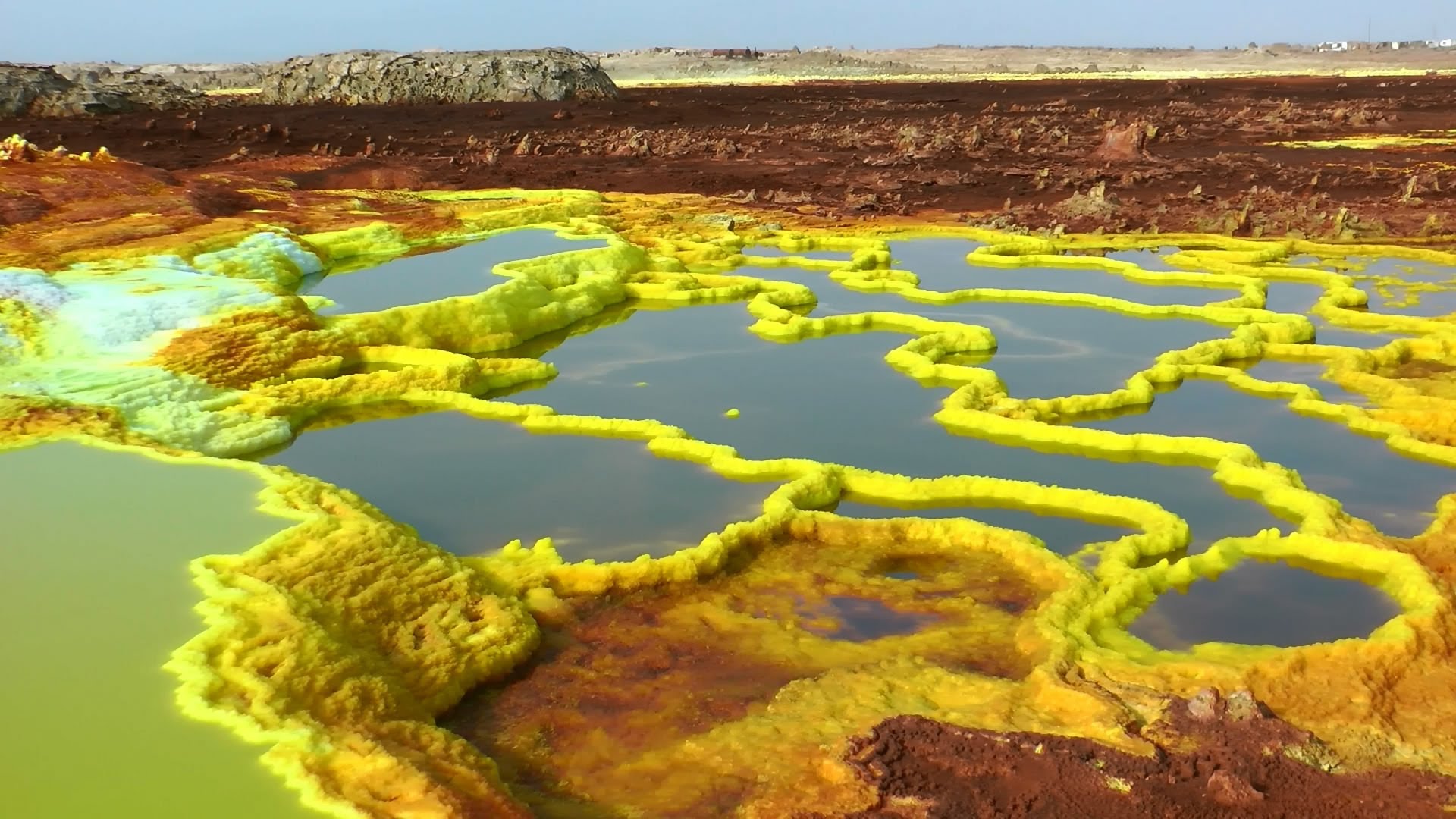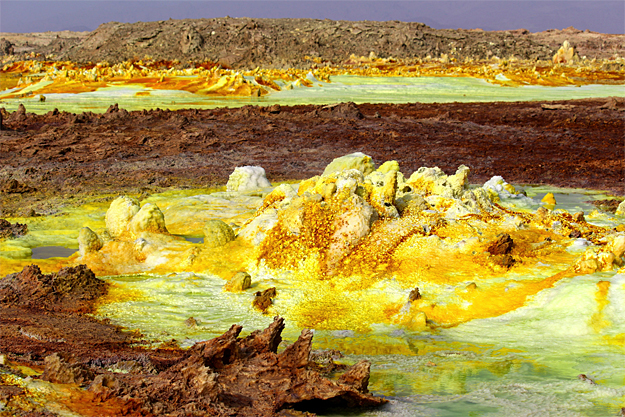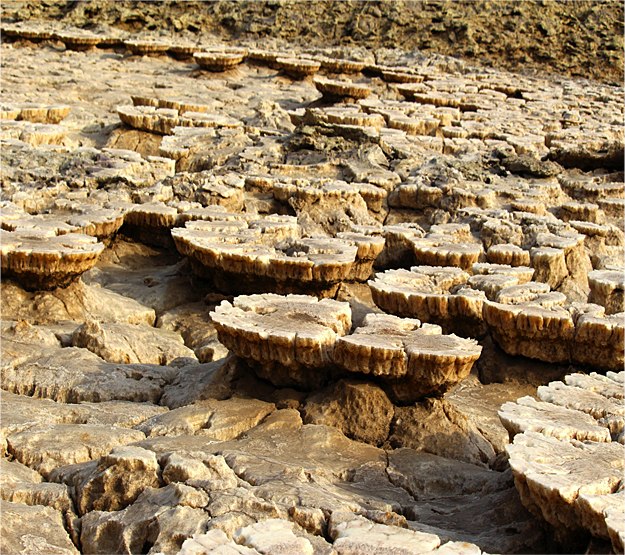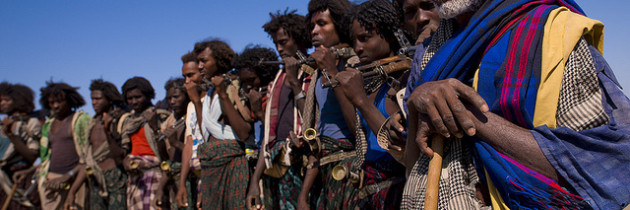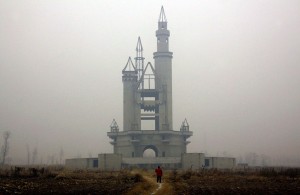Dallol, Ethiopia: Hot, Hot, Hot
Which is earth’s hottest region? People, most regularly, mention the area that has clocked up the highest recorded temperature – Furnace Creek Ranch, Death Valley, California – reaching a dirty 56.7 °C (134 °F).
Dallol, Ethiopia doesn’t normally get as much of a mention, but it really should. It is the very definition of uninhabitable.
The town boasts the highest average temperature across an entire year of any populated area. Sitting in the northernmost region of Ethiopia, Dallol is 130 meters below sea level, making it a literal pressure cooker.
Dallol’s Temperature Records
From 1960-1966 the average yearly temperature for Dallol was 34.4 °C (93.9 °F). That’s incredible, right? Across the whole year – winter, summer, night and day – their average temperature was hotter than the hottest British “summer.” Over the same period, Dallol’s average daily maximum temperature was a terrifying 41.1 °C (106.0 °F).
Dealing with temperatures like that doesn’t bear thinking about; the residents, it seems, agreed. Dallol is now a ghost town with zero inhabitants. Little information about the town survives and what remains is a fairly depressing sight:
It is one of the most remote places on earth. The nearby-ish village of Hamedela has a road being built to it as we speak, but Dallol has no links. Your options, if you should want to visit are jeep or camel. There used to be a rail track, built by the British in 1918 to transport salt, but soon after World War II, it was dismantled.
Dallol is tough to get to from any direction, and the route is described by locals as the “Gateway to Hell” for understandable reasons.
In the years following the completion of the Brit’s railway, the region was producing an estimated 51,000 tons of potash each year. Between the great wars, mining continued, but after WWII, the British dismantled the railway and production ceased.
In the 60s, mining began again, but a flood in the region in 1967 put an end to that. Once again, in the 90s, there was talk of reopening the area to mining, but the brutal Eritrean-Ethiopian war finished it off once and for all; although, it seems there may be some renewed interest in the region’s reserves.
The Danakil Depression
The Danakil Depression, in which Dallol sits, was created by the presence of three competing tectonic plates in the Horn of Africa. It is one of the hottest and lowest regions on earth. It was also the place where the famous fossil – Lucy, the Australopithecus – was found.
Dallol, and the depression at large, is home to some utterly unbelievable hydrothermal business, too. The colours are quite incredible. The yellows are sulphur compounds, the reds are deposits of iron oxides and the greens in the water are thanks to copper salts.
Acidic pools covered in thin crusts and sulphur water spouts can turn a relaxing stroll into a near-death experience.
Magma travels unusually close to the surface of the earth in the Danakil Depression, and water bubbles up into the acidic pools at close to boiling point (90°C). The unwieldy conditions host a variety of extreme ecosystems, making them of particular interest to scientists investigating the possibility of life on more hostile planets (astrobiologists).
Geological Expeditions To Hell
In early 2016, the first geological expedition visited the region; it was led by Dr. Felipe Gmez Gmez of the Centro de Astrobiologa (INTA-CAB) in Madrid, who said:
“There are very few scientific publications on the site and no biological descriptions, so we are genuinely exploring new ground from a scientific point of view.
It is an amazing but hostile place – the temperatures were 42 degrees Celsius during the day and 30 degrees at night, and the chlorine vapor burned our airways. Any microorganisms living here will be extremophilic microbes of a major interest to astrobiologists.”
In case you are getting worried that Dallol and its surrounding area is too habitable, boiling hot temperatures and acid baths isn’t all that they have to offer. The place is a hotbed of seismic activity. In 2005, no less than 163 earthquakes over 3.9 in magnitude were registered in the area.
The Afar People
It’s not just the meteorology and the geology of the place that’s terrifying. Apparently, the people are pretty brutal, too. The local Afar tribes, are to be feared. To be fair, it’s understandable that people growing up in an environment so massively hostile might turn out a little sour.
As an Afar man explained to National Geographic a few years ago:
“In our history, we have always been fighters. We live in the desert, and because it’s a hard land, we must fight, even though killing is against the law of Allah. And when we fight, we use whatever we have: guns and knives, rocks and sticks. We will even bite with our teeth. You use everything when you fight against your enemies.”
The Ethiopian government has decreed that anyone who wishes to visit the Dallol region must take along an armed guard.
In the early 20th century, European explorers reported the brutality of the Afar who, according to legend, had a penchant for castrating their victims. The following quote comes from British explorer Wilfred Thesiger, talking about his 1933 expedition along the Awash River:
“I was prepared to accept the fact that they would kill a man or boy with as little compunction as I would shoot a buck. […] Invariably [the victim was then] castrated. It was impossible to exaggerate the importance that the [Afar] attached to this practice, rating as they did a man’s prowess by the number of his kills.”
Oh, and there’s also the threat of so-called “fire winds” – if a sandstorm whips up in the region, it can be a deadly event.
Basically, it’s not a place you want to live. Although it is no longer the hottest inhabited place, it is well worthy of mention. The views are pretty amazing, too.
MORE EARTHLY WONDERS:
THE UNDERGROUND CITY OF DERINKUYU
INCREDIBLE WEATHER RECORDS PART 1

